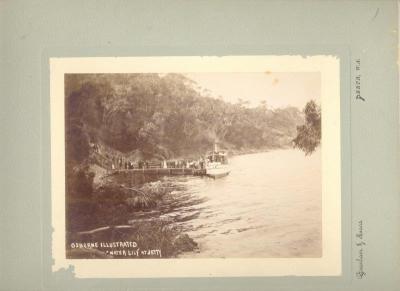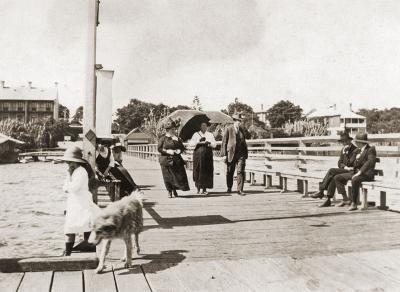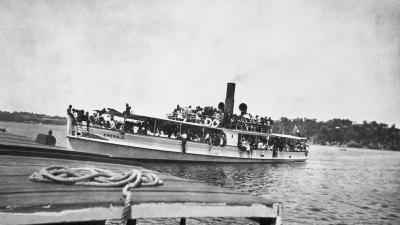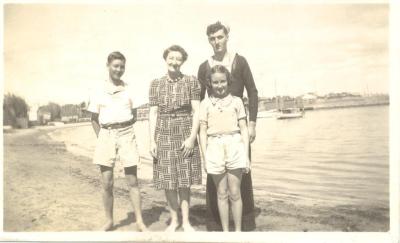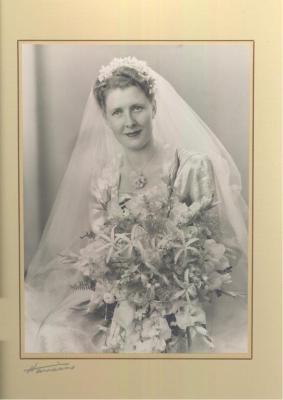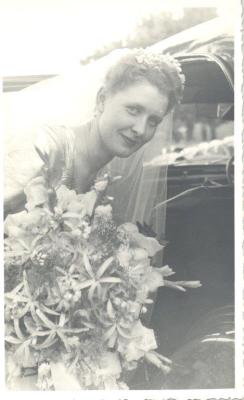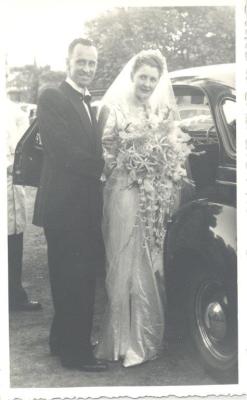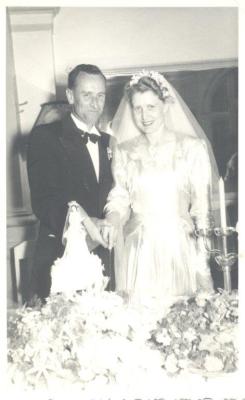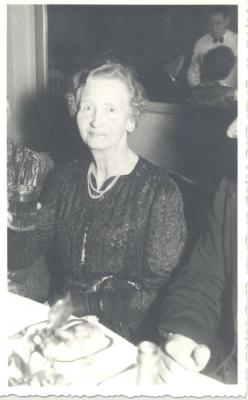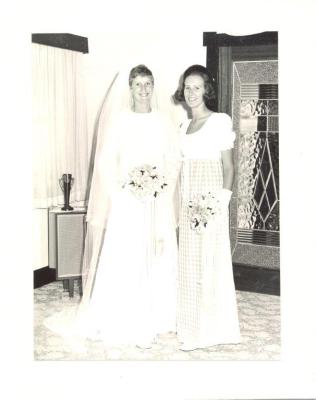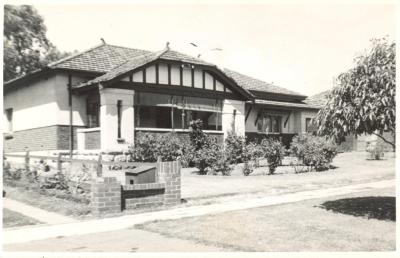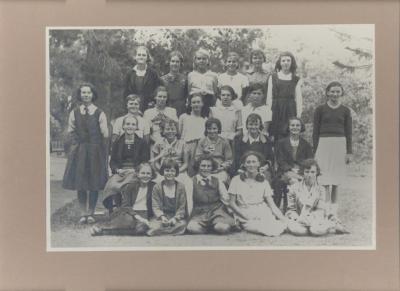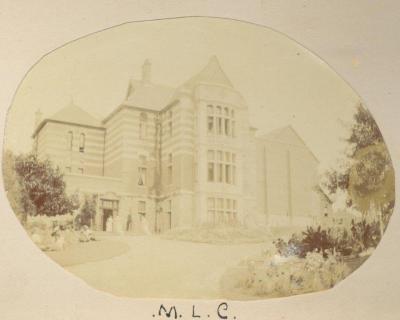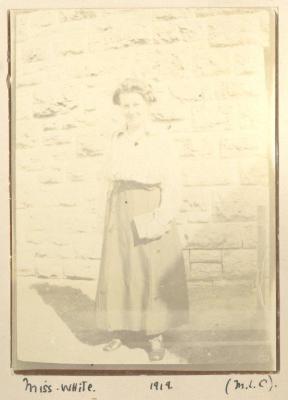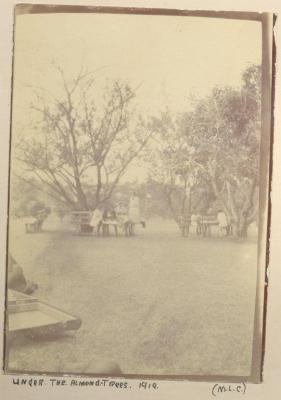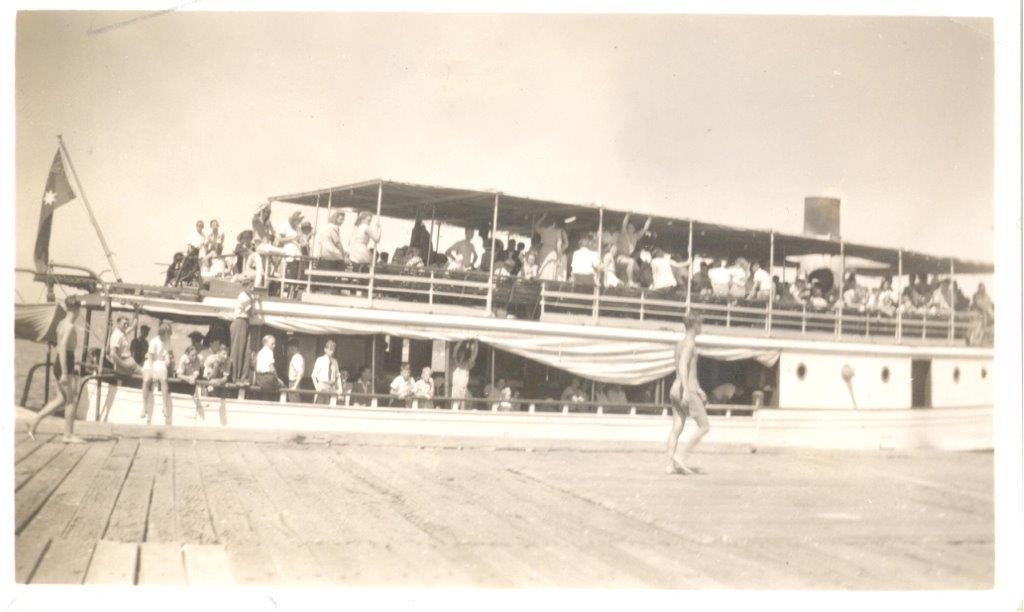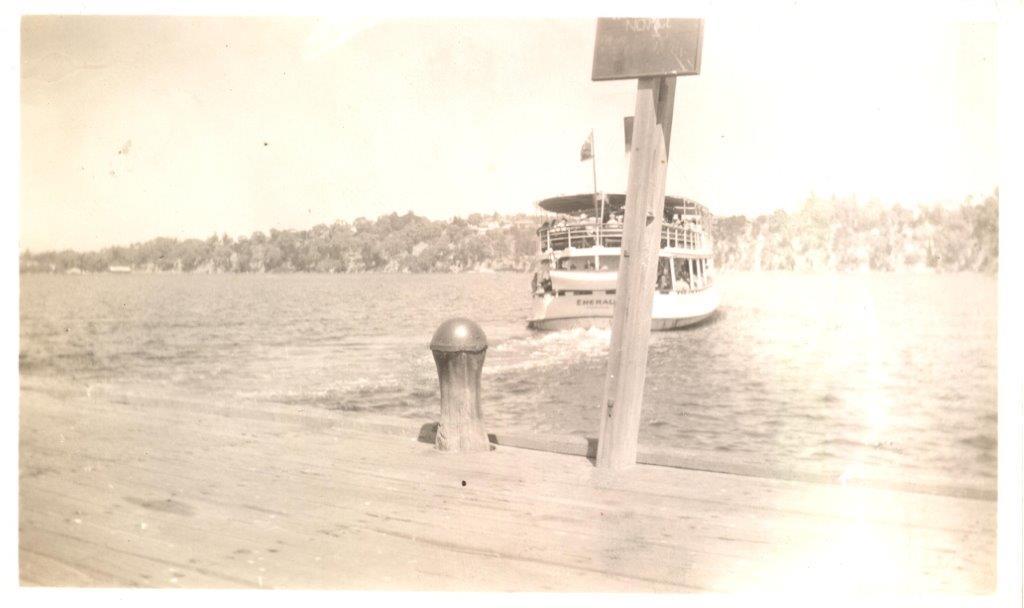EMERALD AT CLAREMONT JETTY
c. 1940 - 1949B/W copies (a) The ferry Emerald tied up at the Claremont Jetty. A blind on the side of the lower deck is partly rolled and there is a flag at the rear. There are people on the upper and lower decks. A man in shorts is walking out the jetty. (b) The Emerald crowded with people leaving the western side of the Claremont Jetty. The jetty is in the foreground with a bollard and sign post, and the Peppermint Grove foreshore in the background.
Invitations to tender went out in January 1897, to build a jetty in Claremont. There must have been something already built on that site as the tender requested a jetty 100 feet long and to remove and re-erect an existing bathing shed and gangway. Mr Matthew Canali was awarded the work which would total £1000. The Jetty was completed in November of 1897 near the foot of BVT for the purpose of both business (in the form of cargo deliveries) and pleasure. Perhaps too much pleasure, as shortly after its completion newspaper articles were printing stories regarding ‘the indecent conduct of certain individuals’ which ‘practically closes the jetty to females’. A call was made to enforce a regulation which stated no person shall bathe within 500 feet of any jetty, wharf, pier or landing place after 7am and before 8 pm and that Constable Huxtable (who lived in what is now the museum building) was asked to enforce this regulation as well as enforcing the need for patrons to wear bathing costumes. As well as individual bathers, The Claremont Amateur Swimming club began at the Claremont Jetty and continued to hold their practices there until the Baths were built. Carnivals were held on the foreshore next to the jetty while spectators crowded on it. Day trippers would either use their own boats or come on the ferry to the Claremont Jetty and walk up the hill to the Continental Hotel for refreshments. In summer months, the jetty was frequently thronged with happy groups waiting to board a river ferry for a shilling (adults) or sixpence (children). Bands would be set up at the end to give the passengers a musical send-off. The River Queen took families and school groups up the river to Point Walter for picnics. At night, the Emerald or Zephyr (2 decks high with enclosed canopy top) would pull up at the jetty with lights blazing and a dance band playing and to pick up passengers for a cruise along the river. During the Railway strike in 1921 the Zephyr and the Westralian ran a ferry service between several towns along the river including Claremont and the city. This combined with a special bus route from Claremont prompted a journalist from the West Australian to say ‘the residents of Claremont are generally much better off than those in many other places”.
Details
Details
More items like this
Other items from Town of Claremont Museum
- WIBBERLEY, J A AND FAMILY
- STUDIO PORTRAITS OF THELMA MERCER AND HER BRIDAL PARTY
- ARRIVING AT CHURCH FOR MERCER / BARTON WEDDING
- BRIDE & GROOM LEAVING CHURCH FOLLOWING MERCER / BARTON WEDDING
- BARTON / MERCER WEDDING RECEPTION
- FAMILY GUESTS AT BARTON / MERCER WEDDING
- WEDDING OF JENNY SHIPSTONE
- BARTON HOME, 28 VINCENT STREET NEDLANDS
- MULDER, JEAN IN SCHOOL PHOTO
- METHODIST LADIES' COLLEGE 1918-1919
- STAFF AND STUDENTS OF METHODIST LADIES' COLLEGE 1919
- METHODIST LADIES' COLLEGE GROUNDS 1919
